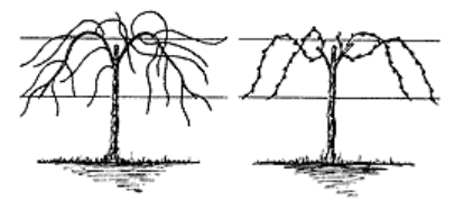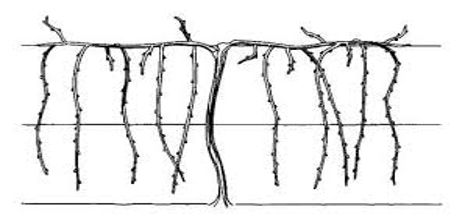Trellis Management at Atwater Vineyards in the Finger Lakes of New York
Trellis Management
Chris King, Vineyard Manager
Understanding and effectively utilizing our resources is key to growing grapes and that begins with canopy management. Canopy management defines how we use the space in the vineyard and refers to anything that physically manipulates how the vines grow. It starts with plant spacing and includes pruning, tying, leaf removal, shoot and fruit thinning, hedging, and trellising. In this post, we will discuss trellising and how we train the vines to grow in the way that most benefits our winemaking goals.
Many different trellis designs and systems are used throughout the world, some simple, and some very complex. Atwater exists in a cool climate growing region, so our major concern is maximizing sun exposure for better fruit quality and disease control. The characteristics of the different varieties we are growing help us to decide how to trellis them. We consider such things as growth habit, susceptibility to disease, and the ripening characteristics of each variety. Hybrid and native varieties are typically more disease resistant and easier to ripen consistently than are vinifera varieties, for example.
Vinifera Grapes
At Atwater Vineyards, 90% of our vineyard is comprised of vinifera varieties which can make unique and complex wines and are highly influenced by growing practices. For these types of grapes, we use either a Vertical Shoot Positioned (VSP) or, more typically, a Scott Henry (SH) system. In VSP, all of the growing shoots are trained up (vertically) with sets of “catch wires.” Scott Henry is also a VSP system, but it is divided so that half of the shoots are trained down instead of up.
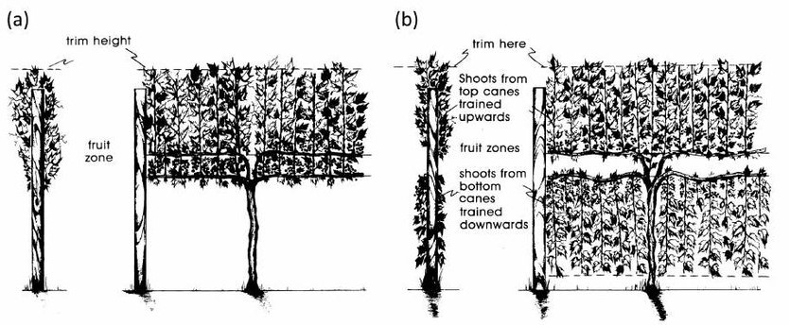
VSP vs. SH
credit: Sunlight into Wine by Richard Smart
When we divide the canopy, the fruit is more exposed and all of the space is utilized which reduces disease pressure, promotes fruitfulness of the shoots, and increases ripeness. To do this, we make several passes through the vineyard to move wires and train shoots. Around bloom (mid-June), we separate the top and bottom tiers and begin rolling the bottom part of the canopy down as well as training the top part of the canopy up. As the shoots continue to grow, we make another pass or two to train shoots between the top set of catch wires.
When we divide the canopy, the fruit is more exposed and all of the space is utilized which reduces disease pressure, promotes fruitfulness of the shoots, and increases ripeness. To do this, we make several passes through the vineyard to move wires and train shoots. Around bloom (mid-June), we separate the top and bottom tiers and begin rolling the bottom part of the canopy down as well as training the top part of the canopy up. As the shoots continue to grow, we make another pass or two to train shoots between the top set of catch wires.
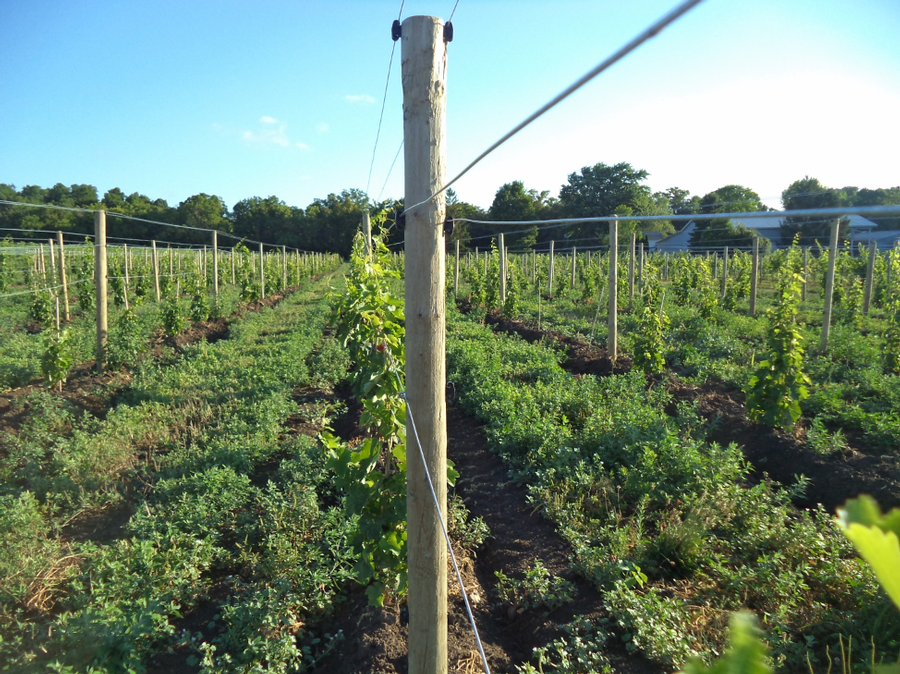
The black clips in the picture allow wires to be hooked and unhooked from those particular locations. We start with them in positions below the growing shoots and move them up as the shoots grow longer.
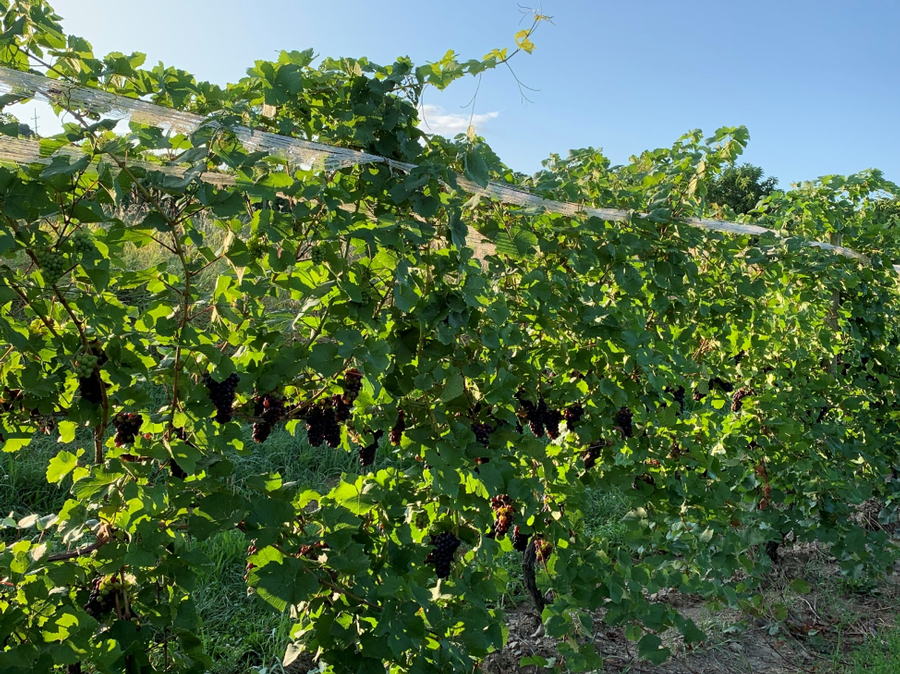
The result is an open canopy with good fruit exposure that makes beautiful wine.
Hybird Grapes
We use Umbrella Kniffin and High Wire Cordon systems for hybrid grapes because they are very low maintenance and well-suited to hybrids since they encourage a naturally open canopy.
Umbrella Kniffin
High Wire Cordon
credit: Sunlight into Wine by Richard Smart
Umbrella Kniffin is a cane pruned system, and High Wire Cordon is a spur pruned system. When we prune our vines, we can either leave canes or cordons. Fruit is produced on new growth coming from two-year-old wood. We can either remove all but a few canes (usually two to four) that grew the previous season or we can shorten many of the canes that grew last year to very short canes or “spurs.” While pruning is a discussion unto itself, the basic premise is that we are trying to judge how many buds we can leave so that we have enough green growth (leaves and shoots) to support the amount of fruit that is growing. If we have too much fruit and not enough leaves, the grapes will not ripen properly and the vines will weaken over time, and if we have too many leaves and not enough fruit, the fruit will also not ripen properly and disease will be more prevalent. Both of Umbrella Kniffin and High Wire Cordon encourage shoots to naturally grow in a way that gives good fruit exposure when pruned properly and paired with the appropriate variety.
By beginning with effective trellis management, we are able to produce the maximum amount of healthy, flavorful grapes at harvest.
